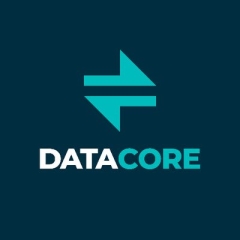Our primary use case is for a high-availability and redundant storage system with fast read and writes times with low latency.

Our primary use case is for a high-availability and redundant storage system with fast read and writes times with low latency.
DataCore SANsymphony has improved our organization by using much less hardware for storage. The power consumption and heat have decreased, so we were able to shut down one air conditioner. Also, it is a faster storage system.
The features I have found most valuable are the active-active, or so-called grid technology, and the integration into our VMware vCenter. Our vCenter is now much easier to manage.
An easier way to open a service call, right through the DataCore GUI, would be an improvement, especially when there is an urgent issue.
Although we have just started to use DataCore, we are very happy with the stability of this solution.
The scalability of this solution is very good.
So far, we have not had to contact customer support.
We used the IBM SAN Volume Controller and switched to DataCore. In our case, it was possible to use less hardware and get more performance.
The initial setup was not complex. The migration was fast and we experienced no problems.
We implemented this solution through a partner company.
The cost is at the same level as other storage solutions and it is easy to understand the licensing.
We have some experience with IBM storage solutions.
I recommend taking a look at DataCore because it is a simple-to-use product that saved us from spending more money on additional hardware and support.
We use it as part of the PCA. And also to recycle berries for which we deport their native intelligence on DataCore.
DataCore SANsymphony has improved our organization in terms of performance, data security and maintenance plan. We can stop one of our machine rooms without interruption of service to the user.
The most useful feature is the continuity of service and the associated performance. It brings great flexibility.
Additional features that should be included in the next release are "application performance and storage" (new tuning and troubleshooting options).
Installation of this hyper-converged infrastructure in our school this summer with two servers directly attached. It works perfectly!!
The heavy client mode console should be improved by having a web console to improve accessibility. Also, the analysis time on the storage increase is one month now. This could be improved.
The first use case was for our data center at the headquarters. We currently have two server rooms, connected by fibre, and the data is synchronized between both using DataCore.
Since DataCore has been installed, the performance of our server has been improved. During the maintenance periods, on any part of the storage or VMware migration, we have had no downtime.
Recently we decided to deploy DataCore™ Hyperconverged Virtual SAN in our manufactury.
The most valuable feature of this solution is the ability to migrate from one storage area to another one easily. The evolution of the solution by adding new storage without having to go through a difficult migration is very helpful.
I think the performance reporting can be improved by adding historical statistics into a database for the purpose of comparison.
A capacity planning solution would be a great addition.
Easy to manage disk pools, different storage tiers and virtual storage repositories Continuous data protection just takes a single click to enable
Pricing can be confounding with many options
SANsymphony-V offers a comprehensive set of storage virtualization functions to build a very robust storage network that speeds up applications, ensures business continuity and facilitates disaster recovery.
DataCore’s comprehensive storage services stack has long been known for harnessing ultra-fast processors and RAM caches in x86 servers, for superior performance and enterprise-class availability. It now comes in a compact, hyper-converged package that is ideal for transactional databases and mixed workloads. DataCore Virtual SAN software is available for a free 30-day trial. It runs on any hypervisor and your choice of standard servers.
We tested DataCore Virtual SAN in May 2015.
Pricing: DataCore-authorized solution providers offer software packages starting under $10,000 for a two-node, high-availability cluster, including annual 24×7 support.
Requirements: Windows Server 2012 R2
For information on DataCore’s SANsymphony-V Software-defined Storage Platform, check out our other video here.
We use the solution for data leakage prevention and information security of the system.
It is a universal solution that manages multiple storage components for different vendors. It integrates well with old storage systems and efficiently synchronizes nodes.
The solution’s interface and ability to manage the data processes could be better.
We have been using the solution for a couple of years.
It is a stable solution. I rate its stability a ten out of ten.
The solution is scalable. I rate its scalability a five out of ten.
I recommend the solution to others and rate it a ten out of ten.
We use DataCore for VMware datastore. Each ESXi can access datastores stored on DataCore servers on different sites.
We don't have to check if sync is good or not between each server, DataCore does it for us and replicates on another site.
Storage access is improved. Just after migration, applications respond faster.
DataCore is very fast storage, applications start faster, and database access is improved. You can attach different storage pool and DataCore chooses where to store data (the most accessed data are on the faster storage automatically).
Replication helps us to replicate virtual servers on different sites easily.
We used Dell EMC and NetApp storage before.
The price and performance of DataCore helped us to change our storage.
Check what really needs fast storage and migrate it to DataCore and let low access data be on other storages.

